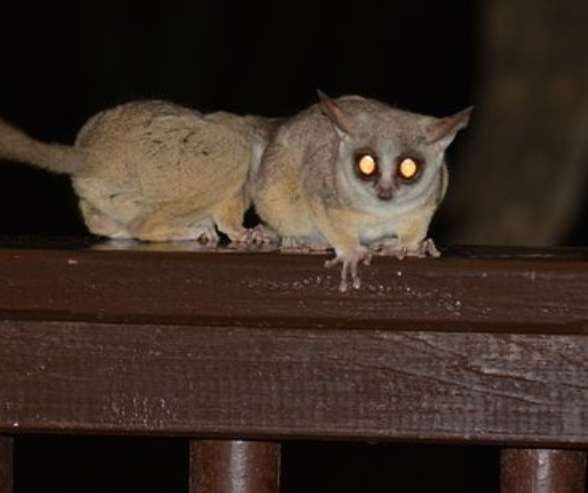Night Hunter: A Comprehensive Guide To Nighttime Wildlife Observation

Table of Contents
Essential Gear for Nighttime Wildlife Observation
Nighttime wildlife observation requires specialized equipment to enhance your experience and ensure your safety. Investing in the right gear will significantly improve your chances of successful sightings and minimize your environmental impact.
Illumination Tools
Proper illumination is crucial for nighttime wildlife observation, but it's essential to use it responsibly. Bright, white light can startle animals and disrupt their natural behaviors.
- Red Light Headlamps: These are ideal for maintaining your night vision while providing enough light to navigate safely. Look for models with adjustable brightness and a wide beam. Brands like Petzl and Black Diamond offer high-quality options.
- Spotlights: Useful for scanning larger areas, spotlights should be used sparingly and with caution. A powerful spotlight can easily disturb wildlife and damage their night vision. Consider using a dimmer switch to control the intensity.
- Battery Life Considerations: Always carry extra batteries, especially if you plan on a long observation session. Nothing is worse than running out of power in the dark.
- Light Intensity Control: Learn to adjust your light's intensity depending on the situation. A dim red light is sufficient for navigating, while a brief burst of brighter light might be needed for identifying a distant animal.
Optics for Night Vision
Choosing the right optics is key to observing nocturnal animals. Magnification and light gathering ability are critical factors.
- Binoculars for Night Observation: Look for binoculars with large objective lenses (the front lenses) to maximize light gathering. Image stabilization is also a valuable feature. Consider models from brands like Nikon, Vortex, or Bushnell.
- Night Vision Scopes vs. Thermal Imaging: Night vision scopes amplify ambient light, while thermal imaging detects heat signatures. Thermal imaging is more expensive but allows you to see animals even in complete darkness.
- Choosing the Right Magnification: Higher magnification is great for detailed observation, but it reduces the field of view and requires more stable support. Start with lower magnification for scanning and gradually increase as needed.
Clothing and Footwear
Appropriate clothing is essential for comfort and safety during nighttime wildlife observation.
- Layers for Temperature Regulation: Nighttime temperatures can fluctuate significantly. Dress in layers to adapt to changing conditions.
- Quiet Clothing Materials: Avoid rustling materials that could alert animals to your presence. Choose soft, natural fabrics like wool or fleece.
- Waterproof Boots for Damp Conditions: Many nocturnal habitats are damp. Waterproof boots will keep your feet dry and comfortable.
Safety Equipment
Safety should always be your top priority when observing wildlife at night.
- First-aid kit contents: Include bandages, antiseptic wipes, pain relievers, and any personal medications.
- Insect repellent with DEET: Protect yourself from insect bites, especially mosquitoes and ticks.
- Whistle or Personal Locator Beacon (PLB): These can be lifesavers in case of an emergency.
Locating Optimal Nighttime Wildlife Observation Sites
Finding the right location is crucial for successful nighttime wildlife observation.
Identifying Prime Habitats
Different ecosystems support diverse nocturnal wildlife.
- Researching local wildlife: Use online resources and local field guides to identify the nocturnal species in your area and their preferred habitats.
- Understanding habitat preferences: Nocturnal animals often prefer areas with water sources, abundant cover, and a readily available food supply.
- Avoiding private property: Always obtain permission before entering private land.
Minimizing Light Pollution
Light pollution significantly impacts nocturnal animals and hinders observation.
- Using light pollution maps: Websites and apps can help you find dark sky locations.
- Seeking out dark sky locations: Areas far from urban centers offer the best chances of observing nocturnal wildlife undisturbed.
- Observing during moonless nights: The absence of moonlight enhances visibility and reduces disturbance to animals.
Access and Permits
Some locations may require permits or have access restrictions.
- Checking local regulations: Research any necessary permits or regulations before heading out.
- Obtaining necessary permits: Secure any required permits well in advance of your trip.
- Respecting wildlife sanctuaries: Adhere strictly to any rules and guidelines set by wildlife sanctuaries.
Ethical Considerations for Nighttime Wildlife Observation
Responsible and ethical observation is paramount to ensure the well-being of wildlife and the preservation of their habitats.
Minimizing Disturbances
Avoid actions that could stress or harm animals.
- Observing from a distance: Use your binoculars and spotting scope to observe animals without getting too close.
- Avoiding sudden movements: Make slow and deliberate movements to avoid startling animals.
- Respecting animal territories: Avoid encroaching on animal territories or disturbing their nests or dens.
Leave No Trace Principles
Minimize your impact on the environment.
- Pack out all trash: Remove all trash and leave the area as you found it.
- Avoid disturbing vegetation: Stay on established trails whenever possible.
- Keep noise levels to a minimum: Avoid loud noises that could disturb animals.
Conclusion
Nighttime wildlife observation offers a unique and rewarding experience, unveiling the secret lives of nocturnal animals. By utilizing the right equipment, selecting appropriate locations, and adhering to ethical guidelines, you can become a skilled night hunter and contribute to responsible wildlife conservation. Remember to prioritize safety and respect the natural world. Start planning your next nighttime wildlife observation adventure today! Learn more about effective techniques for nighttime wildlife observation and become a responsible observer of the night, contributing to the understanding and preservation of these fascinating creatures.

Featured Posts
-
 Recent Conor Mc Gregor Fox News Segment Sparks Debate
May 12, 2025
Recent Conor Mc Gregor Fox News Segment Sparks Debate
May 12, 2025 -
 Cassidy Hutchinsons January 6th Testimony A Look Ahead To Her Upcoming Book
May 12, 2025
Cassidy Hutchinsons January 6th Testimony A Look Ahead To Her Upcoming Book
May 12, 2025 -
 Sheehans Resilience Ipswich Town Remain Undeterred
May 12, 2025
Sheehans Resilience Ipswich Town Remain Undeterred
May 12, 2025 -
 Amazon Doom Dark Ages Xbox Controller Sale Limited Edition
May 12, 2025
Amazon Doom Dark Ages Xbox Controller Sale Limited Edition
May 12, 2025 -
 L Euro Face Aux Tensions Analyse Du Dechiffrage Economique
May 12, 2025
L Euro Face Aux Tensions Analyse Du Dechiffrage Economique
May 12, 2025
